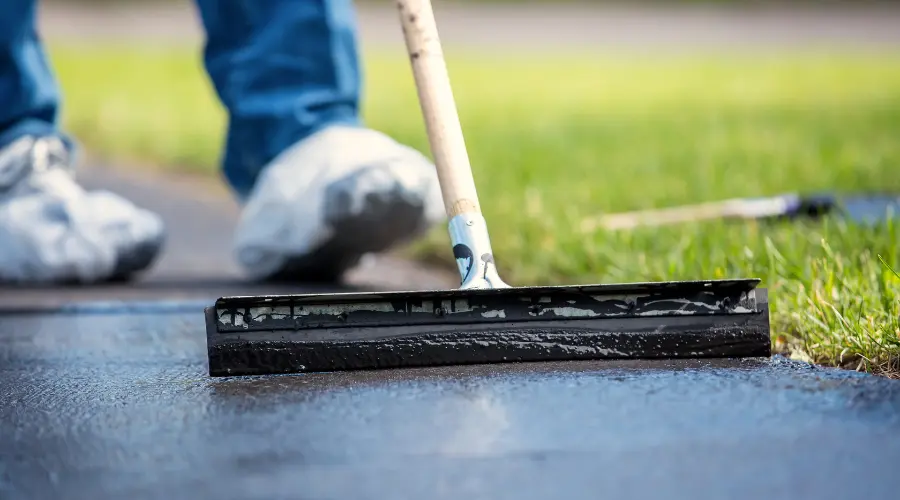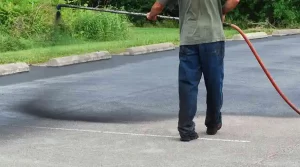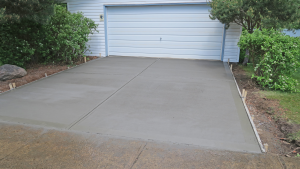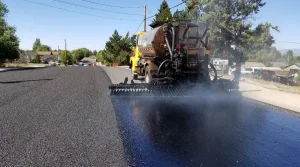Seal coating is the ultimate shield for your asphalt surfaces. Whether it’s a driveway, parking lot, or any other paved area, this process safeguards against wear and tear, ensuring a smooth and long-lasting finish.
Key Takeaway
- Seal coating is a vital maintenance process for asphalt surfaces, extending their lifespan and enhancing their appearance.
- By protecting against weather damage, UV rays, and chemicals, seal coating saves money in the long run and ensures a durable, attractive surface.
What Is Seal Coating?
Seal coating involves applying a protective layer over asphalt pavement to shield it from harmful elements like water, oil, UV rays, and chemicals. It not only prevents cracking and pothole formation but also revitalizes the appearance of your asphalt, giving it a fresh, uniform finish.
Why Is Seal Coating Important?
Seal coating provides multiple benefits, including:
- Protection Against Weather: Acts as a barrier against rain, snow, and ice, preventing water from seeping into the asphalt and causing damage.
- UV Ray Shielding: Reduces the effects of sun exposure, which can make asphalt brittle and prone to cracks.
- Oil and Chemical Resistance: Protects against spills that could weaken the surface.
- Enhanced Aesthetic Appeal: Gives asphalt a clean, polished look, improving curb appeal.
- Cost Savings: Reduces the need for frequent repairs and extends the overall life of the surface.
The Seal Coating Process
Step 1: Surface Preparation
Proper preparation is critical for a successful seal coating project. This involves:
- Cleaning: Removing dirt, debris, and vegetation using tools like brooms, blowers, or pressure washers.
- Power Washing: For stubborn stains, power washing ensures a deep clean.
- Oil Spot Treatment: Treating oil spots with a primer to promote adhesion.
- Drying: Allowing the surface to dry completely before proceeding.
Step 2: Crack Sealing
Crack sealing prevents water intrusion and further damage:
- Inspection: Identifying all cracks and evaluating their severity.
- Cleaning Cracks: Using high-pressure air or a crack cleaning machine to clear debris.
- Filling Cracks: Applying a hot or cold rubberized filler to seal cracks effectively.
Step 3: Application Methods
Choosing the right application method depends on the project size and specific needs:
- Spray: Ideal for large areas, offering a quick and smooth application.
- Squeegee: Provides a thicker application, perfect for filling minor imperfections.
- Brush: Best for small areas or intricate edges, ensuring precision.
Step 4: Curing
Curing is essential for a durable seal coat:
- Drying Time: Typically takes 24-48 hours, depending on weather conditions.
- Traffic Restriction: Avoid any traffic on the surface during the curing period.
Step 5: Post-Application Maintenance
To maintain the effectiveness of seal coating:
- Regular Cleaning: Sweep and wash the surface to remove debris.
- Periodic Inspections: Address any new cracks or damage promptly.
- Reapplication: Seal coat every 2-3 years to ensure continued protection.
Frequently Asked Questions (FAQ)
How often should I seal coat my asphalt?
Seal coating is typically recommended every 2-3 years, depending on the traffic volume and environmental conditions.
Can I seal coat over damaged asphalt?
No, repairs like crack sealing or patching should be completed before applying a seal coat to ensure optimal results.
What is the ideal weather for seal coating?
Seal coating should be done when temperatures are above 50°F, with dry conditions and no rain expected for at least 24 hours.
How long before I can use the sealed surface?
It’s best to wait 24-48 hours for the seal coat to cure fully before allowing traffic.
Does seal coating fill cracks?
Seal coating does not fill cracks; it’s a protective layer. Cracks need to be filled separately before the seal coat is applied.
Is seal coating environmentally friendly?
Many modern seal coating products are eco-friendly, using water-based formulations that minimize environmental impact.
Can I do seal coating myself?
While DIY kits are available, professional seal coating ensures better results due to proper surface preparation and application techniques.
Conclusion
Seal coating is more than just a cosmetic upgrade; it’s a necessary step to protect and prolong the life of your asphalt surfaces. By following a systematic process that includes surface preparation, crack sealing, and proper application, you can enhance durability, reduce maintenance costs, and maintain a polished appearance for years to come. To ensure the best results, consider partnering with experienced professionals like Jersey City Paving and Concrete. Contact us today to discuss your asphalt maintenance needs and secure a long-lasting solution.







